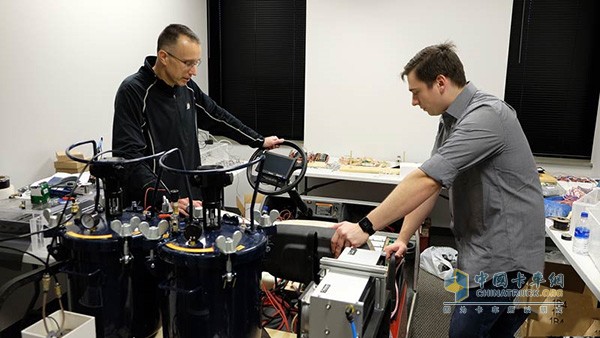This technology is similar to the Scottish "fluid cell" technology, which uses a thin film to pass ions through two separate "liquid containers" of battery cells. The former does not require a film and uses only one battery "container". John Cushman, a well-known professor at Purdue University, said in a statement that a new system using only one battery fluid can achieve a much higher energy density. This means that electric vehicles can use lighter batteries and have longer cruising range, making fluid batteries a strong competitor for batteries for electric vehicles. “Historically, fluid batteries have never been competitive due to low energy density. For example, traditional fluid batteries have an energy density of about 20 watts per kilogram, and lithium-ion batteries have a potential of 250 watts per kilogram. Our fluid batteries have potential. Up to 3-5 times that of lithium-ion batteries. IFBattery senior engineer Michael Dziekan explained in a statement that the technology also stores the generated hydrogen at a much lower pressure. "This battery generates both electricity and hydrogen. This is important. Most hydrogen energy vehicles use a gas tank with a pressure of 5,000-10,000 psi, which is quite dangerous. The new system stores the generated hydrogen at a pressure of 20 or 30 psi." The system is currently being tested on vehicles such as golf carts, and according to current developments, researchers believe it can provide 3000-600 miles (about 4800-5800 kilometers) of cruising range for electric vehicles. The user only needs to change the battery liquid every 480 km. The whole process is very similar to the current refueling, and the time required is much shorter than the 45 minutes required to charge the lithium ion battery electric vehicle. Cushman said, "The new technology will change the rules of the next generation of electric cars, because it does not require huge investment in the reconstruction of the grid, the current gas stations can be modified to serve them. Compared with the existing battery system, it More advantages in terms of ease of use, safety and environmental protection" Once the battery anode wears out -- about 5,000 kilometers, the time to replace it is about the same as changing the oil, and the price is only about $65. Reusing parts and battery fluids is also a big selling point for new technologies. Parts and battery fluids can be recycled and reused after charging in a solar or wind power plant. “The energy will be substantially completely recycled and only rarely was wasted. The new battery is very safe, can be stored at home, and is stable enough. It is quite cost-effective in terms of economy."
HDPE ( Uniaxial geogrids(ux Geogrid) ) : Ultimate Tensile Strength 30kN/m to 300kN/m, HDPE geogrids (Uniaxial ) range : Flexurally stiff biaxial monolithic and integrally formed geogrid constructed of PP- Polypropylene or HDPE – polyethylene by a unique punching and drawing process .
1. It reinforce old asphalt concrete road surface and asphalt layer, and prevents damage ;
2. It is used for rebuilding cement concrete road surface into composite road surface and restraining reflection caused by block contraction .
3. It is used in road expansion and improvment project and crack caused by old and new combination position and uneven sedimentation ;
4. It is used in soft soil base reinforcement treatment , is favorable for soft soil water separation and concretion,restrains sedimentation effectivly,distributes stress uniformly and improve overall strength of road base;
5. It is sued for preventing contraction crack caused by new road semi-rigid base layer,and reinforces and prevents road surface crack caused by foundation crack reflection.
Hdpe Uniaxial Geogrid, Polyethylene Uniaxial Geogrid, Polyethylene Extruded Laminated Geogrid Feicheng Lianyi Engineering Plastics Co., Ltd , https://www.lianyigeosynthetics.com Purdue University Researcher
Purdue University Researcher
According to foreign media reports on March 15, 2019, researchers at Purdue University in the United States have developed a new electric vehicle battery technology using a patented "fluid" system, enabling electric vehicles to last more than 5,000 kilometers. This technology uses a battery fluid to generate the electrical energy and hydrogen needed to drive an electric car and is currently being tested on a golf cart.